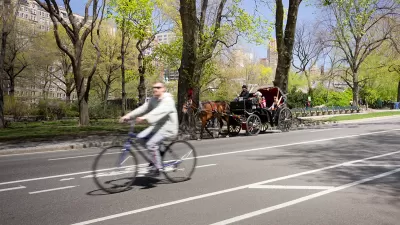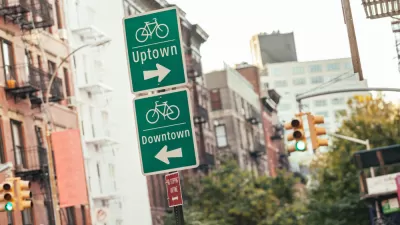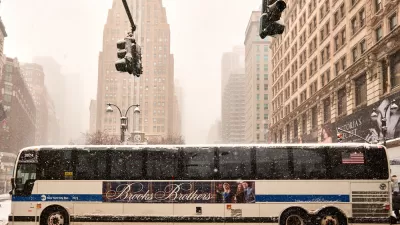A new report released by the New York City Department of Transportation (DOT) shows a steady increase in the number of bikers in the city. A lack of data, however, continues to be a problem for accurate assessment of the trend.

"Biking in New York City has been rising at a steady clip, according to a new report from NYC DOT, increasing about 50 percent between 2010 and 2014," reports Ben Fried.
Tempering Fried's excitement about the growing number of bikers in the city are the glaring omissions in the report: "What’s not so clear is how things changed in 2015, because the report lacks key information about bike traffic on the Hudson River Greenway."
The "Cycling in the City" report [pdf] combines data from the U.S. Census, a city Department of Health survey, and the DOT bike counts. "In some ways the report is a step up from the annual cycling metrics DOT has released in the past, which only included the DOT bike counts," writes Fried. "Folding in the Census bike commute numbers and health department survey data yields a more complete view of citywide and borough-by-borough cycling trends."
The problem begins in 2015, explains Fried. Because the report lacks "counts of cyclists on the Hudson River Greenway and 50th Street, or at the Whitehall ferry terminal" in 2015, it's impossible to compare that year to the years previous. Friend offers this recommendation: "Instead of waiting for DOT to release a report with all of these stats each year, the city should be publishing them as feeds on its open data portal, giving New Yorkers access to all the underlying numbers."
The article also includes a series of information-packed graphics to illustrate the trends in biking around the city.
FULL STORY: All of DOT’s Bike Metrics Should Be Published on NYC’s Open Data Portal

Alabama: Trump Terminates Settlements for Black Communities Harmed By Raw Sewage
Trump deemed the landmark civil rights agreement “illegal DEI and environmental justice policy.”

Planetizen Federal Action Tracker
A weekly monitor of how Trump’s orders and actions are impacting planners and planning in America.

The 120 Year Old Tiny Home Villages That Sheltered San Francisco’s Earthquake Refugees
More than a century ago, San Francisco mobilized to house thousands of residents displaced by the 1906 earthquake. Could their strategy offer a model for the present?

In Both Crashes and Crime, Public Transportation is Far Safer than Driving
Contrary to popular assumptions, public transportation has far lower crash and crime rates than automobile travel. For safer communities, improve and encourage transit travel.

Report: Zoning Reforms Should Complement Nashville’s Ambitious Transit Plan
Without reform, restrictive zoning codes will limit the impact of the city’s planned transit expansion and could exclude some of the residents who depend on transit the most.

Judge Orders Release of Frozen IRA, IIJA Funding
The decision is a victory for environmental groups who charged that freezing funds for critical infrastructure and disaster response programs caused “real and irreparable harm” to communities.
Urban Design for Planners 1: Software Tools
This six-course series explores essential urban design concepts using open source software and equips planners with the tools they need to participate fully in the urban design process.
Planning for Universal Design
Learn the tools for implementing Universal Design in planning regulations.
Clanton & Associates, Inc.
Jessamine County Fiscal Court
Institute for Housing and Urban Development Studies (IHS)
City of Grandview
Harvard GSD Executive Education
Toledo-Lucas County Plan Commissions
Salt Lake City
NYU Wagner Graduate School of Public Service





























